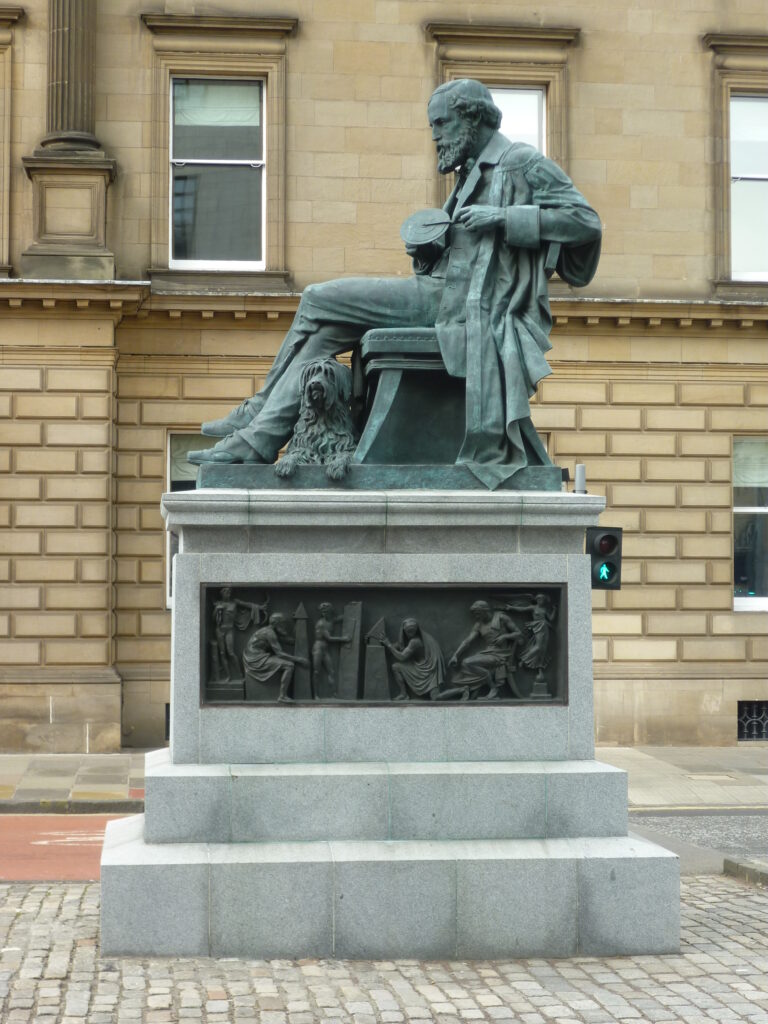Syllabus PHY350

Professor: Miron Kaufman OFFICE: SI-116, TEL.6872436
m.kaufman@csuohio.edu
Prerequisites: MTH181, MTH182, MTH281, PHY330
LECTURE: M, W 6:00 – 7:15 PM, SI-147
OFFICE HOUR: M, W 3:00 – 3:50 PM, SI-116
REQUIRED BOOKS: D. J. Griffiths: Introduction to Electrodynamics
Kaufman: Electricity and Magnetism Computational Projects
We study the laws of Electrostatics and Magnetostatics, the Maxwell equations, and their applications to the physics of dielectrics and magnetic materials.
Tentative Schedule
- WEEK #1, 2 REVIEW OF VECTOR ALGEBRA and CALCULUS CH.1;
- WEEK #3, 4 ELECTROSTATICS: COULOMB LAW, GAUSS LAW, POTENTIAL CH.2;
- WEEK #5, 6 POISSON AND LAPLACE EQUATIONS CH.3;
- WEEK #7, 8 POLARIZATION, DIELECTRICS CH.4;
- WEEK #9, 10, 11, 12 MAGNETOSTATICS: LORENTZ FORCE, BIOT–SAVART LAW, AMPERE LAW; MAGNETIC MATERIALS CH.5; 6
- WEEK #13,14 OHM LAW, DRUDE MODEL; FARADAY-LENZ INDUCTION; MAXWELL EQUATIONS CH.7;
- WEEK #15 CONSERVATION LAWS: CHARGE (CONTINUITY EQUATION), ENERGY (POYNTING EQUATION) CH.8.
Important Dates
- NO CLASS: M SEPTEMBER 2, W OCTOBER 16.
- Last day to withdraw: Friday, November 1.
Exams Schedule
- Exam #1 M, October 14
- Final Exam W, December 11.
The final grade is a weighted average of:
- Exam #1 30%
- Final Exam 35%
- Computer Project 25%
- Homework, Quizzes 10%
QUIZ SOLUTION
- Quiz #1
- Quiz #2
Part of the course is a project in the computer lab of the Physics Department. We will work modeling problems in electrostatics and magnetostatics by using MathCad on the following dates:
- W, September 4:Computer lab #1: Vector algebra and calculus
- W, September 18:Computer lab #2 and Computer lab #3:
- W, October 2: Computer lab #4:
- W, October 30: Computer lab #5:
- W, November 13:Computer lab #6:
- W, November 27:Computer lab #7:
Homework
Homework #1
- Griffiths Ch.1: Problems: 3, 7, 11, 13, 15, 18; Examples: 9, 10, 11
- Using the Cartesian unit vectors x, y, z, write the vector V pointing from (2, -4, 1) to (0, -2, 0). Find its magnitude |V| and the angle it makes with the z axis.
- Given V1 = 3x +5y –z; V2 =-2x +y -3z; V3 = 6x +5y -3z, compute: V1*V2; V1xV3; V1*(V2xV3); (V1xV2)xV3. Check that (V1xV2)xV3 = –V1(V2*V3) + V2(V1*V3).
- Consider a cube. Calculate the angle between the cube’s diagonal and the face diagonal adjacent.
- Given V = y2zx + z2xy + x2yz , verify: del*(delxV) = 0; delx(delxV) = del(del*V) – del2V
- DUE:W 9-4-17
Homework #2
- Griffiths Ch.1, Problems: 44, 45, 49.
- Griffiths Ch.2, Problems: 2.
- Calculate the electric flux generated by a uniform field E = Ex through the faces of a cube of side size a.
- DUE:
Homework #3
- Two charges -q0 and – aq0 are at a distance L apart. They are free to move but they do not because of a third charge. Compute the third charge and its location.
- Griffiths Ch.2, Problems: 3, 4, 5, 6.
- DUE:
Homework #4
- Griffiths Ch.2, Problems: 9, 11, 12, 13, 15, 16.
- DUE:
Homework #5
- Griffiths Ch.2, Problems: 21, 22, 23, 24.
- DUE:
Homework #6
- Griffiths Ch.2, Problems: 14, 25, 38, 39, 43, 52.
- The electrostatic potential is V(x,y,z) = axy. What are the SI units for the constant a? Calculate: (a) the electric field E; (b) delxE; Is V a possible electrostatic potential ? ; (c) the charge density; (d) the energy density.
- DUE:
Homework #7
- Griffiths Ch.2, Problems: 31, 32, 34, 36.
- The electrostatic potential is V(x,y,z) = a(x2 – y2). What are the SI units for the constant a? Calculate: (a) the electric field E; (b) x E; Is V a possible electrostatic potential? ; (c) the charge density; (d) the energy density.
- DUE:
- Griffiths Ch.3 Problems: 13, 15, 33, 34, 36.
- DUE:
Homework #8
- 1. For the physical dipole of Griffiths Example 3.10 find the first three terms in the potential multipole expansion: monopole, dipole, quadrupole (see also Griffiths, Problem 3.31).
- 2. A circular ring of radius R, centered on origin and laying in the xy plane, carries a uniform linear charge density ?. Find the first two terms in the potential multipole expansion: monopole, dipole (see also Griffiths, Problem 3.28).
- DUE:
Homework #9
- Griffiths Ch.4 Problems: 18, 19, 20, 21.
- DUE:
Homework #10
- Griffiths Ch.5 Problems: 1, 2, 3, 4.
- DUE:
Homework #11
- Griffiths Ch.5 Problems: 9, 14, 15; Example 5.8.
- DUE:
Homework #12
- Griffiths Ch.7 Problems: 1, 2, 5.
- DUE:
Homework #13
- Griffiths Ch.7 Problems: 7,8,10.
